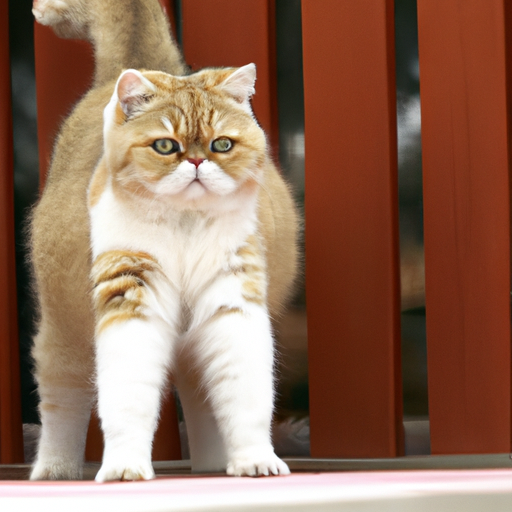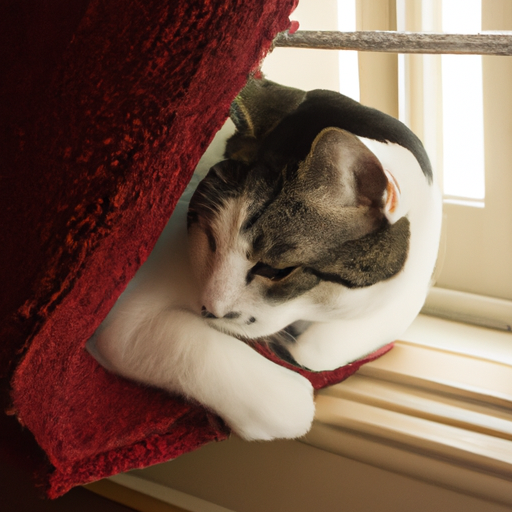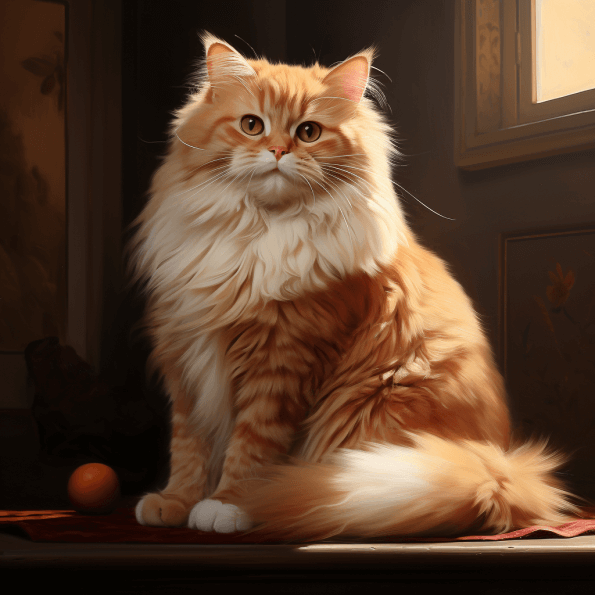Why Do Cats Wag Their Tails?
Ever caught your feline companion wagging its tail and wondered why? The behavior isn’t as random as you might think. In fact, understanding why cats wag their tails could be the secret to deciphering your pet’s emotions, needs, and wants. In the following article, you’re going to unravel this mystery and gain insights into the world of cattail communication, an area of cat behavior that’s as fascinating as it is complex. Buckle up, it’s time to know your cat a bit better!

Understanding Cat Behavior
As a cat owner, it can be fascinating looking at your feline friends, trying to decipher their every move. From their meows to their mischief, everything is a clue to understand their behaviors. Among these many clues, one of the most significant yet overlooked is the manner in which they wag their tails.
The Language of Cat Tails
Cats use their whole body to communicate, including their tails. You may have often wondered, “Why do cats wag their tails?” Well, different tail movements express different emotions. By understanding this language of cat tails, you can figure out if your cat is relaxed, agitated, threatened, or playful.
Signs of Stress in Cats
In the world of cats, tail wagging isn’t a straightforward sign of happiness like it is in dogs. It can be a sign of many emotions, including stress. When cats are stressed or anxious, they may thrash their tails from side to side or puff them up. It can indicate that they want to be left alone, or they’re preparing for a potential threat.
Cat Communication
It may be surprising to discover that while cats do use vocalization as a form of communication, a larger part of their language involves body movements and scent marking. By observing the different nuances, such as the tail’s position, movement, and speed, one can gain insights into a cat’s mood or intent.
The Anatomy of a Cat’s Tail
A cat’s tail plays a vital role in its behavior, needs, and moods, and the anatomy plays an integral role in all of it.
The Structure of a Cat’s Tail
The tail of a cat is essentially an extension of its spine and includes between 19 to 23 vertebrae, muscles, and ligaments. All these elements are essential for flexible movement.
How Flexibility Aids in Communication
With such a flexible structure, cats can move their tails in various ways, which helps them communicate different emotions. Whether it’s slightly twitching at the end or vigorously swaying sideways, each movement has a meaning.
The Role of Fur in Cats’ Tails
A cat’s fur also plays a role in their tail communication. Puffed-up fur generally indicates fear or annoyance, while a sleek tail signifies a relaxed state.
Reasons Why Cats Wag Their Tails
You might have noticed your cats wagging their tails in different situations. Let’s break down the reasons behind these movements.
Boredom or Restlessness
Tail wagging isn’t always about emotional responses; sometimes, it just means your cat is bored or restless. Constant tail movement can signal mental or physical stimulation needed from your end.
Agitation or Fear
A cat quickly flicking its tail from side to side might be agitated or afraid. This can be a warning to back-off before they take defensive action.
Excitement or Enthusiasm
When your cat sees something intriguing, say, a bird by the window, you might notice their tail twitching in excitement. However, rapid wagging usually signifies enthusiasm rather than calm happiness.
Cat Tail Wagging and Emotions
Understanding the link between cat tail wagging and their emotions can go a long way in promoting a harmonious relationship.
How Cats Express Happiness
A cool and content cat often has its tail high and tipped slightly forward. This shows that they are happy, confident, and open to social interaction.
Tail Wagging as a Sign of Annoyance
Contrary to popular belief, cats wag their tails when they are annoyed. A tail tapping swiftly, especially if the rest of the body is still, is sending a sign of annoyance or impatience.
Signals of Fear or Stress
A tucked tail, possibly between their legs, indicates fear or stress. In contrast, a puffed-up tail means the cat is feeling threatened and is preparing to protect itself.
Reading a Wagging Cat Tail
Delving deeper into tail wagging nuances can help you understand what your cat is trying to say.
Degree of Movement
The degree of movement can signify many emotions. Small, slow wags usually mean curiosity, whereas violent, rapid wags indicate agitation or fear.
Direction of Wag
Tail movements can vary with direction. Upward movements usually express happiness or curiosity, while side-side movements might imply agitation or distress.
Speed of the Wag
In addition to the degree of movement and direction, the speed of the wag also signals a cat’s emotion. Slow wags could suggest that a cat is calmly observing its surroundings, while fast wags might indicate excitement or agitation.
How Different Cats Wag Their Tails
As unique as cats are, their tail wagging can also differ, adding another layer of complexity to reading cat behavior.
Differences Among Breeds
Different breeds may wag their tails differently. Breed-specific personalities can influence how a cat communicates, and that extends to their tail wagging.
Differences Due to Individual Personalities
Just like humans, cats have unique personalities. Some cats may express themselves more dramatically with exaggerated tail wags, while others may show subtler movements.
Differences in Tail Length
The length of a cat’s tail can also affect how they communicate. Cats with longer tails might show more pronounced tail movements, while those with short tails or stubs may seem to have minimal tail action.
Cats Wagging Their Tails When Playing
Wagging tails aren’t always about serious “catversations.” Sometimes, they mean playtime.
Understanding Play Behaviour in Cats
Play is crucial in a cat’s life, and tails play a significant role in this. Cat’s often use their tails as a “play lure” for other cats or humans, twitching it to invite a chase.
Tail Movements During Hunting Games
While playing hunting games, you’ll notice focused tail movements. The tail twitches and wags as the cat zeroes in on its pretend prey, indicating high levels of concentration and excitement.
How to Interpret Excitement
The rapid twitching of the tail’s tip is usually a sign of high excitement levels. However, extreme excitation isn’t always positive and can sometimes lead to aggression. So, always keep an eye on your cat’s behavior during playtime.
Tail Wagging in Cats Vs Dogs
When it comes to tail wagging, cats and dogs display this behavior with entirely different meanings.
Understanding Dog Tail Wagging
Unlike cats, dogs primarily wag their tails to show happiness. Fast wagging with loose hips usually indicates a happy and relaxed dog.
Contrasting Cat and Dog Tail Wagging
Cat tail wagging can often be misinterpreted as it is somewhat similar to dog tail wagging. Unlike dogs, however, cats wag their tails due to a mix of emotions, including annoyance, fear, anxiety, and also excitement.
Misinterpretations Between Species
These differences in tail wagging can lead to misinterpretations between the species. This is a reason inter-species communication can get tricky and needs patience and understanding.
Problematic Tail Wagging in Cats
While tail wagging can often reveal an emotional state, it can sometimes signal potential health issues.
Injury Related Tail Wagging
If you notice any unusual tail movement or a change in usual wagging patterns, your cat might have a tail injury. It’s worth keeping an eye open for this, as cats are notorious for hiding pain.
Nervous System Conditions
Additionally, abnormal tail wagging might signal a nerve or spinal issue. If your cat is excessively wagging its tail, dragging it, or seems unable to control it, it’s time to consult with a veterinarian.
When to Consult a Veterinarian
If you’re ever uncertain about your cat’s tail wagging, especially if it involves any physical discomfort, it’s wise to consult a vet.
Interacting with a Cat that’s Wagging its Tail
Understanding the meaning behind your cat’s tail wagging helps you interact better with them and avoid any unwanted situations.
Appropriate Petting Techniques
Understand when your cat is open to interaction or when they prefer to be left alone. If their tail is upright or calmly swishing, they’re likely open for a pet. However, a rapid, twitching tail means that it’s better to give your furry friend some space.
Reading Body Language
Beyond the tail, other body language indicators can also provide valuable clues about your cat’s mood, such as ear position, fur condition, vocalizations, and overall body posture.
Avoid Provoking a Wagging Tail
If your cat’s tail is showing signs of agitation or fear, it’s best not to provoke them further. The key is to respect their boundaries and give them their desired space.
In conclusion, it’s clear that the seemingly simple question, “why do cats wag their tails?” is really a gateway to understanding the complex language of feline communication. So the next time your cat is wagging its tail, remember, they’re trying to tell you something. Listen with your eyes, respect what they’re trying to communicate, and you can cultivate a deeper, more meaningful relationship with your feline friend.






